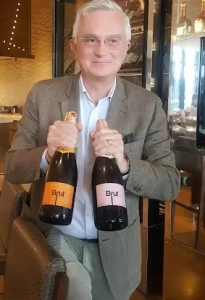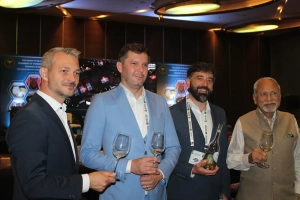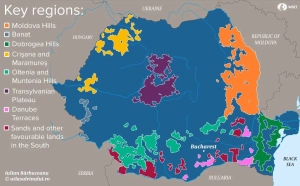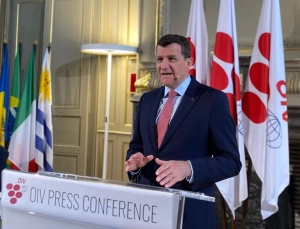Blog: Indian Bubblies better than ever… but are NOT Champagne

The onlinemag mag has several errors only one of which is ‘Grover La Reserve Brut, fermented in barrels and aged for more than 30 years, you can get it in metro cities in India under ₹220’. The purpose of this Article is not to be a critique of any Article but only to warn people at large who may not be directly connected with the wine industry and are likely to get into trouble.
The well-established and well-oiled machine like Comité Interprofessionnel du vin de Champagne (CIVC) trade association which preserves the prestige surrounding the name “Champagne” and which spends millions of Euros every year to stop the unprincipled folks who try to take unfair advantage of its reputation. Any unfair use that dilutes the reputation of Champagne is banned, including for comparative products outside the wine industry.
Since the 1980s the CIVIC has been spending millions of Euros to strengthen protection of the name Champagne. For instance, it was quite popular in India to use its name to glorify any other products which was to be promoted as the best in its category. E.g., a famous tea company used to call its top tea as champagne of teas but it was stopped in the tracks.
Thanks to the Comité Champagne’s education, the Champagne designation is now recognised and protected in more than 130 countries including France, Italy and India and even in the US as a registered GI in the European Union, where the word is allows to be used only for the bubbly crafted in the Champagne region under very strict rules and guidelines. This means you cannot buy grapes from Champagne and ferment in a bordering area and call it Champagne. Even the process used, Méthode Champenoise, may not be used anywhere else. Traditional Method meaning fermenting in the bottle is allowed for production.
Indian ‘Champagne’ in India
The most obvious example can be found closer at home when Indage Vintners started the business of making sparkling wines in Narayangaon, Maharashtra and named the company as Champagne Indage. Due to the strict compliance, the wine company had to even change its name finally to Indage Vintners. When Sula brought out its sparkling wine using Chenin Blanc and Thompson grapes and called it a Sula Brut Champagne, I had suggested to the Founder CEO of Rajeev Samant at a wine dinner at Delhi Wine Club where it was served that this would be considered illegal, he feigned ignorance but the next vintage it was rechristened as sparkling wine.
Another case was that of Valle de Vin in Nashik which was later named as Zampa and merged with Grover Vineyards. They had announced in 2009 that they were introducing Zampagne that rhymed well with Zampa and Champagne, with the intent of rhyming well with champagne. But before it was introduced, the company changed the plans because of the legal suit that was lurking on their head the moment they announced.
Champagne and the US producers
CIVC even took a strong action against the US producers who had been making champagne in the US since the middle of 19th century before the concept firmed up.
We have seen the US producers changing their names to sparkling wines but under a ‘Grandfather clause’ with some producers making champagne since the 1860s were allowed to use the name champagne if they added the origins, Like Korbel, California Champagne.
Is Chandon a Champagne
Chandon sparkling is considered as a Champagne by a majority of not-so-informed wine lovers in India since it is produced by a strong well-known Champagne producer Moet and Chandon which has several popular brands in its champagne portfolio. Moet Hennessey does not use the tem champagne for Chandon but does not balk at the small restaurants serving Chandon as champagne but when someone takes action against these restaurants, it would be the end of that privilege.
Vorsicht is the word
But it is important for the newbies to stay away from calling Indian sparkling wines as Indian Champagnes or from other countries like Australia- there is still a continuing battle between Russia and Champagne but there are a exceptions. India may be the fifth largest economy today but the government has no wherewithal to fight these cases as we are new producers with no history like the US.
A Personal horrific experience
Just to share a personal experience, I once read a beautiful Article by an Indian lady living in the US in some magazine. I thought it would be really beneficial for our novice Indian readers. Somehow I located the email contact of the editor of the magazine to allow me to publish it-of course after I gave due credit to the magazine. A few years later- lo and behold! I got a legal notice from the writer demanding a huge sum of money as compensation, removing the Article immediately (which I did immediately anyway) or she would sue me in an American court.
It felt hurtful that an Indian would be so greedy that for an educational article that would have made it popular In India after spreading the good information about wine which was rare then, she would demand huge money –in dollars. Luckily, I had in my record the permission given by the magazine editor and I was told by a senior journalist friend that once someone writes for a magazine, it becomes the property of the magazine and if the editor gives permission to publish it, one does not have to look for the author to take permission. I wish I had saved the Article- I had removed it from my website!
Same advice goes for this magazine Slurrp and its writer who would do well to study wine laws and traditions, particularly at the international levels and more particularly about Indian Champagnes as this is sure to get her and the magazine into trouble sooner or later.
Subhash Arora





